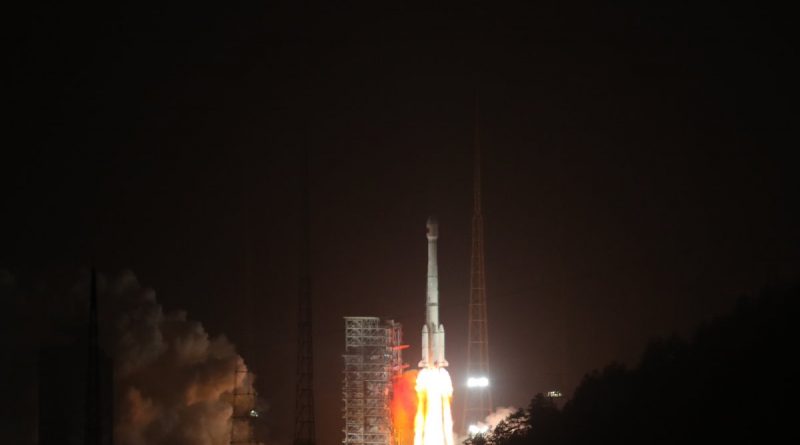China Continues Busy January with Dual-Satellite Launch for Beidou Navigation System
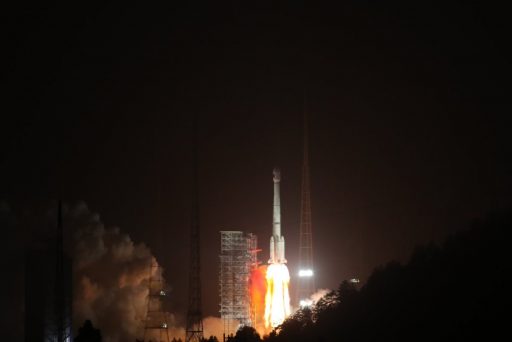
China continued its busy beginning-of-year push on Thursday with the launch of a Long March 3B rocket from the Xichang Satellite Launch Center, carrying the next two Beidou-3 navigation satellites to join the country’s growing global navigation satellite system that is expected to reach operational strength in 2018.
Long March 3B blasted off from its launch pad in China’s Sichuan province at 23:18 UTC, 7:18 a.m. local time on Friday. Official acknowledgement of the launch came after the two satellites reached their target Medium Earth Orbit over 21,500 Kilometers in altitude via their Yuanzheng Upper Stage. Independent tracking data confirms the two Beidou satellites were successfully dispatched to their operational orbit and separated from the upper stage.
Thursday’s launch was the second Chinese space mission of the year, coming just two days after a Long March 2D successfully lifted the second pair of SuperView commercial Earth-imaging satellites.
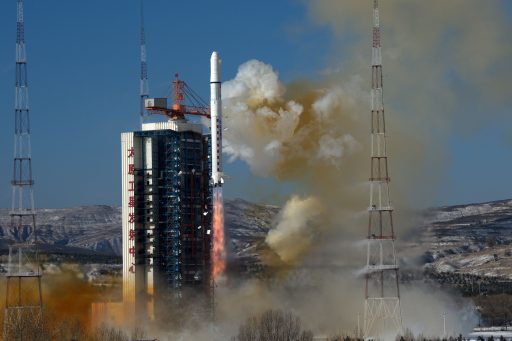
January is expected to see up to five launches by the Long March fleet: China’s next mission is right around the corner, targeting launch Saturday morning (UTC) with the next LKW “Land Survey Satellite” and the next three Yaogan-30 electronic intelligence satellites are penciled in for launch on the 29th. Long March 11, an all-solid-fueled launcher, is also set for launch in January, carrying a pair of imaging satellites on its third orbital mission.
Overall, China is looking forward to around 40 space missions this year as the country’s space efforts continue a proliferation from a primarily military-oriented space program with occasional crewed missions and science flights to a broad mix of military and civilian satellites, commercial space endeavors, robotic exploration of the solar system and the operation of a large orbital space station.
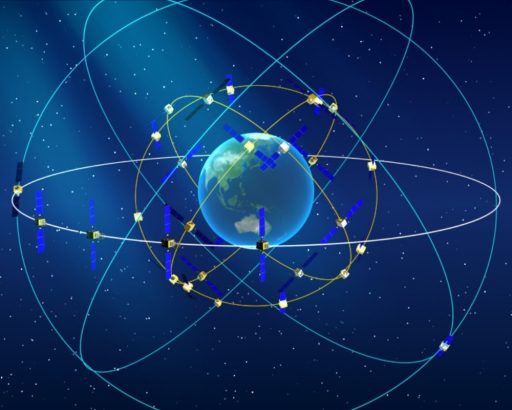
One particular focus of 2018 will be China’s Beidou (Compass) Global Navigation Satellite System. At least ten and as many as 18 Beidou satellites could be launching this year according to the China Aerospace Science and Technology Corporation. This would bring the constellation to an initial operational capability before the end of the year as China pushes toward completion of the fully operational system in 2020.
Beidou employs a combination of satellites in Medium Earth Orbit, Geostationary Orbit and inclined Geosynchronous Orbit whereas the U.S. GPS, Europe’s Galileo and Russia’s Glonass only rely on satellites in MEO and India’s Navic only operates from GEO. The Chinese system finds its roots back in 1983 when the first proposals for a navigation system were made, but the program’s first launch did not occur until 2000.
The Beidou project was drawn out as a three-step program, starting out as a purely regional navigation system operating from Geostationary Orbit before broadening the coverage area to include the entire Asia-Pacific Region and then pushing for global, 24/7 coverage.
>>Beidou Project & Constellation Overview
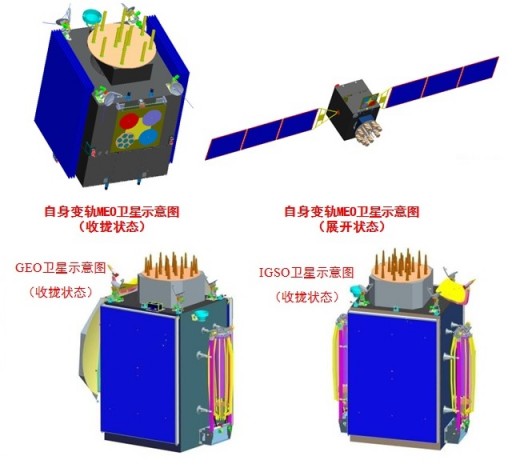
The first step was realized with three Geostationary Satellites providing service to the Chinese mainland with an accuracy of 20 meters. The Beidou-2 system covering the Asia-Pacific Region was inaugurated in 2009 with five satellites in GEO, five satellites in inclined Geosynchronous Orbit and several planes in Medium Earth Orbit, also offering improved accuracy.
The final push toward global coverage is currently underway via deployment of the Beidou-3 constellation that, in addition to establishing round-the-clock coverage for all locations, will further enhance the system’s accuracy.
The finished Beidou-3 constellation will comprise 27 Beidou-3M satellites in Medium Earth Orbit, five Beidou-3G satellites in Geostationary Orbit over the equator and three Beidou-3I satellites in inclined Geosynchronous Orbits.
Two types of MEO satellites are employed by Beidou-3, made by two different manufacturers (CAS & CAST). To that end, the first three MEO launches under Beidou-3 were classed as in-orbit validation missions while the most recent Beidou-3 mission in November lifted the first operational satellite pair. Thursday’s launch brings the number of Beidou-3 MEO satellites to seven.
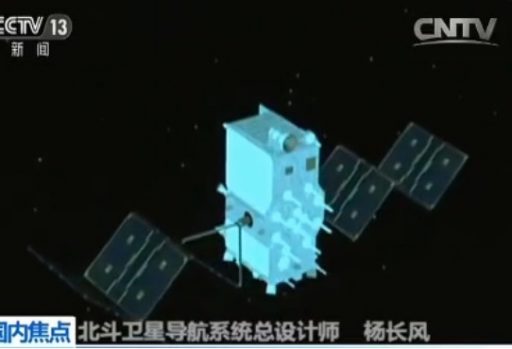
The Beidou-3 architecture uses satellites in different orbits to provide compatibility with ground terminals of previous generations that only work with GEO/GSO satellites. Consequently, the Geostationary and Geosynchronous satellites carry two navigation payloads, the Radio Determination Satellite Service retained from Beidou-1 to provide compatibility with heritage receivers and the newer Radio Navigation Satellite Service that operates in a similar way as the GPS, Galileo, Glonass and Navic systems – sending coded signals in the L-Band frequency with ultra high timing precision so that receivers on the ground can process three or four different signals in order to calculate the user’s precise position, elevation and speed.
The Medium Earth Orbit Satellites carry only the Radio Navigation Satellite Service payload allowing them to be smaller in size than the high-altitude satellites and their two payloads. CAS was responsible for the two satellites launched on Thursday, and a TV report indicated their designation will be Beidou-3 M7 and M8; however, these are still subject to official confirmation.
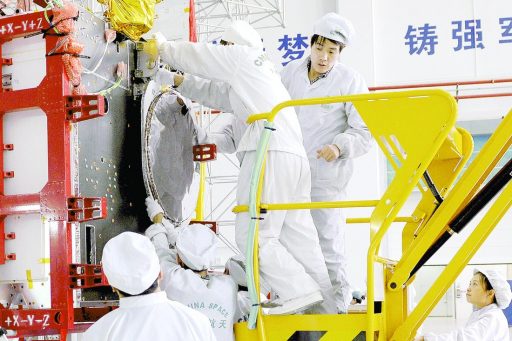
The Medium Earth Orbit satellites are deployed to an orbit of 21,520 by 21,545 Kilometers inclined 55.26 degrees and the finished constellation will feature three orbital planes with nine satellites per plane to guarantee global coverage.
Deployment of the Beidou-3 constellation primarily relies on China’s heritage launch vehicle, namely the Long March 3B that can launch pairs of MEO satellites with help of the Yuanzheng-1 upper stage while GEO/GSO satellites either use the YZ-1 upper stage for a direct injection or start out in a transfer orbit and raise their orbits themselves.
The 56.3-meter tall Long March 3B lifted off at precisely 23:18:04.616 UTC – around one hour before sunrise at Xichang, climbing vertically for a few seconds before aligning itself with a south-easterly trajectory, taking it over the Yunnan, Guizhou and Guangxi provinces, the Gulf of Tonkin, Hainan Island and out over the Pacific Ocean.
>>Long March 3B Launch Vehicle
With its four liquid-fueled boosters and large core stage firing at full throttle, the Long March 3B had a total launch thrust of 604 metric-ton-force as it departed Xichang, en-route to an initial Parking Orbit.
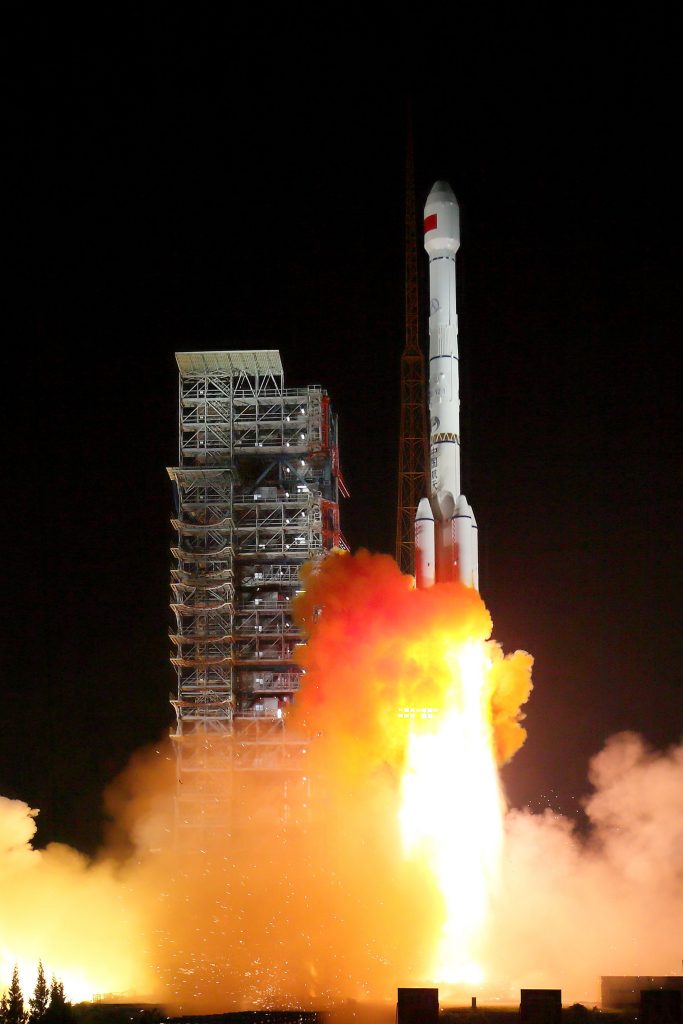
The four boosters, 16.09 meters long and 2.25 meters in diameter, were to fire for two minutes and 20 seconds – each delivering 740 Kilonewtons of additional thrust and burning through 41,100 Kilograms of hypergolic propellants. After separation of the boosters, the vehicle was to continue ascent powered by the stage alone, fitted with a four-chamber DaFY-6-2 engine cluster providing 2,961 Kilonewtons of thrust. The stage stands 24.76 meters tall and holds 186,200 Kilograms of propellants at liftoff enabling it to burn for 158 seconds.
Separation of the stages was planned to occur in hot mode, starting with the ignition of the second stage’s vernier engine and followed by the firing of cutting charges to allow the spent core to be discarded and the second stage to fire up its main engine. The 12.9-meter long second stage, holding 49,000kg of propellants, was expected to burn for nearly three minutes with a total thrust of 742 Kilonewtons.
Assuming control of the flight, the third stage was to ignite its YF-75 dual engine cluster that, unlike the other CZ-3B stages, burns Liquid Oxygen and Liquid Hydrogen. Generating 157 Kilonewtons of thrust, the third stage was to burn through 18,200 Kilograms of cryogenics over the course of one or two burns to raise put the stack into an elliptical transfer orbit for separation of the YZ-1 Upper Stage.
The Yuanzheng-1 (Expedition-1) upper stage has been developed as a multi-purpose vehicle capable of executing mission profiles with several engine burns over extended mission durations. Using storable propellants, the main engine of the YZ-1 stage delivers 6.5 Kilonewtons of thrust and supports at least two in-space engine starts – first to finish the parking orbit insertion and setting the proper apogee altitude and again for the circularization after an extended coast phase. Injection of the Beidou-3 satellites is planned directly into their operational orbit nearly four hours after launch.
Tracking data provided by the Joint Space Operations Center shows the launch went as planned:
2018-003A/43107: 21538 x 22194 km, 55.00° (Beidou-3) 2018-003B/43108: 21543 x 22193 km, 55.00° (Beidou-3) 2018-003C/43109: 22186 x 22508 km, 55.03° (YZ-1 R/B) 2018-003D/43110: 208 x 18545 km, 54.96° (CZ-3B R/B)

